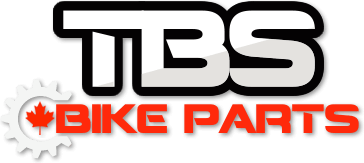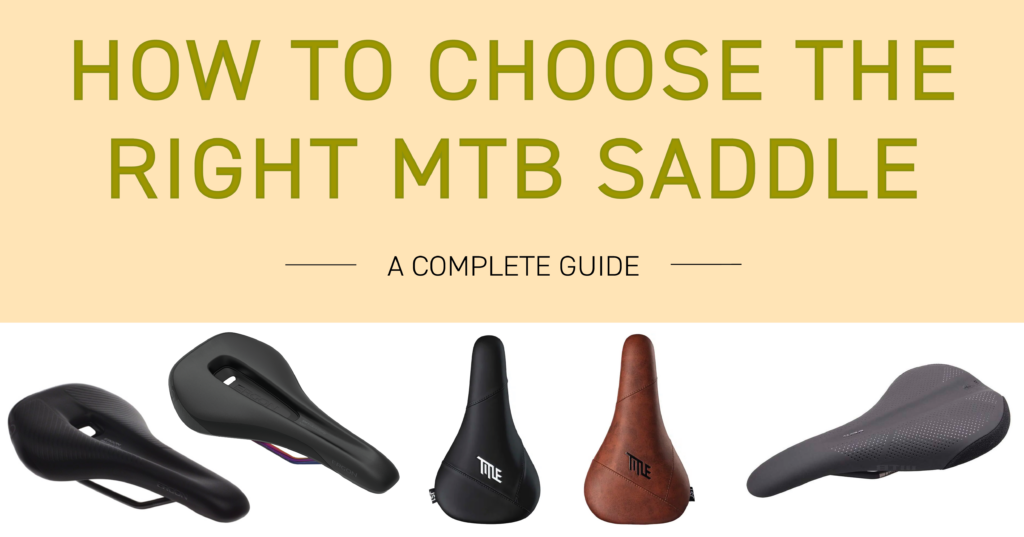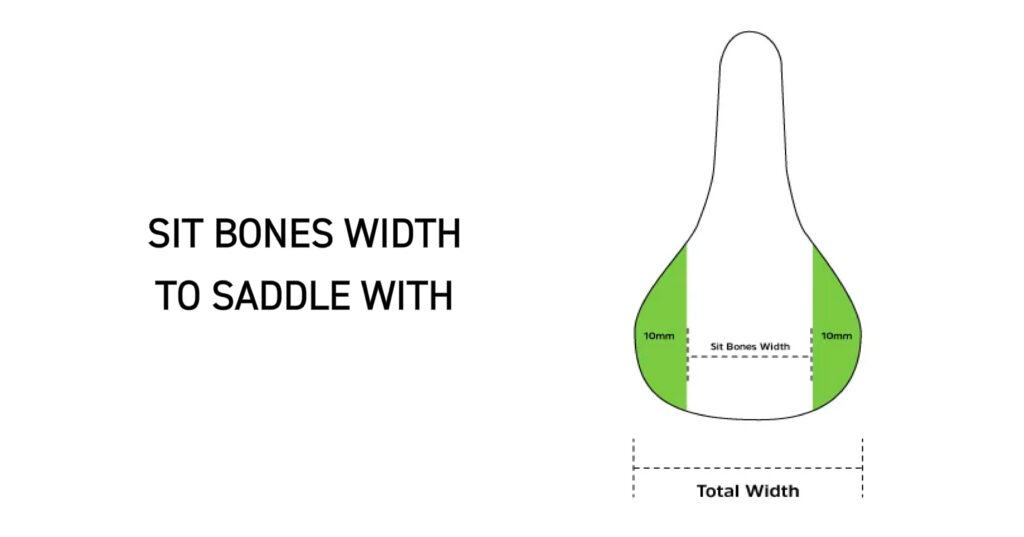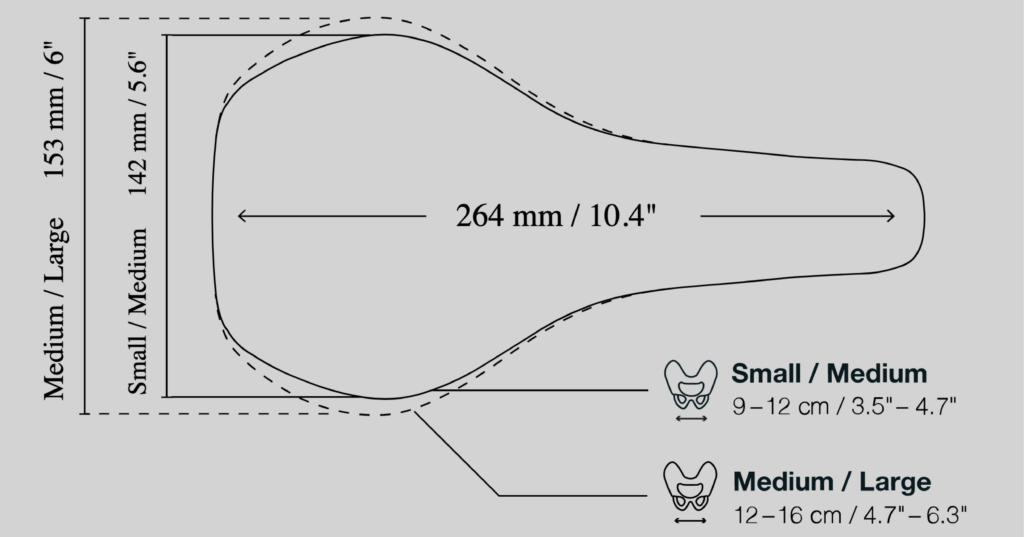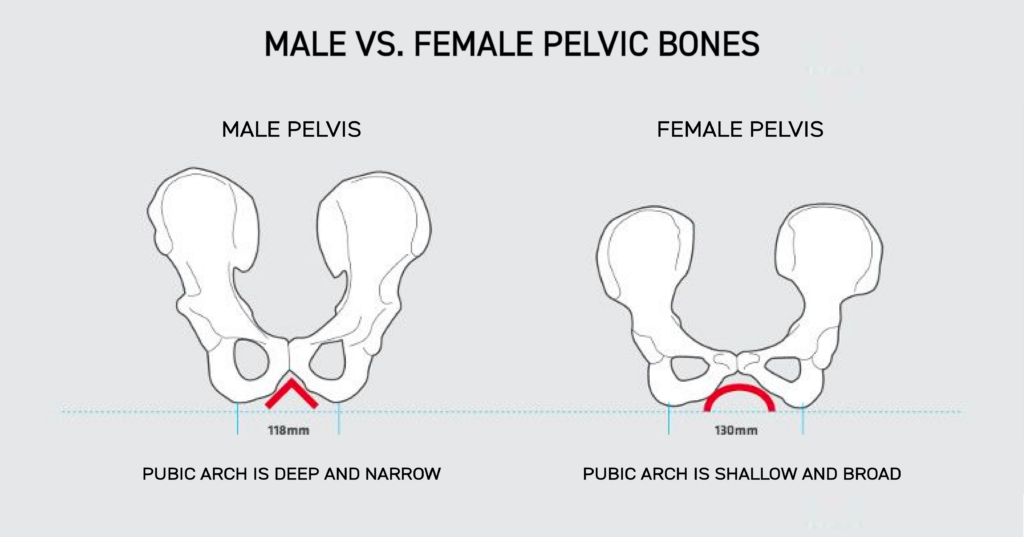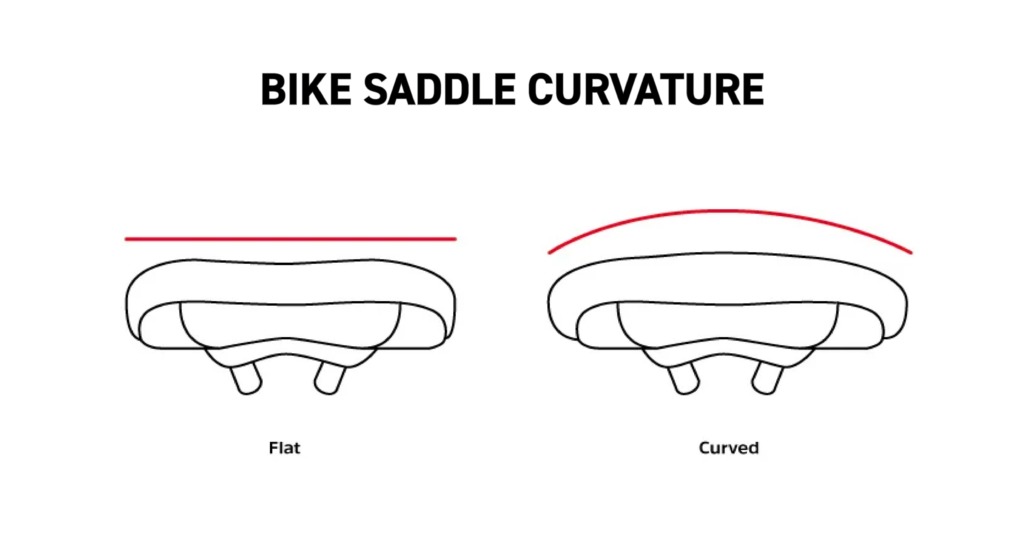How to Choose the Right MTB Saddle
Choosing the right mountain bike (MTB) saddle is important for your comfort and overall riding experience. The right saddle should provide support, minimize discomfort, and prevent numbness during long rides. In the following article we are going to go over all of the factors and steps to help you choose the right MTB saddle:
1. Determine your riding style:
Your riding style plays a significant role in determining the right mountain bike (MTB) saddle for you. Identify your style of mountain biking, whether it's cross-country, downhill, enduro, or trail riding. Different riding styles involve distinct body positions, movements, and demands on your saddle. Here's how your riding style relates to choosing the right MTB saddle:
Cross-Country (XC) Riding:
XC riders typically maintain an upright or slightly forward-leaning position to maximize pedaling efficiency. They spend long hours in the saddle, so comfort and support are crucial. Look for a saddle that is lightweight, offers good support, and has padding in the right places. A saddle with a medium width and a balanced shape is often a good choice.
Downhill Riding:
Downhill riders spend less time seated and are often in a more aggressive, standing position. Their saddles should be durable, provide good clearance for technical descents, and offer minimal obstruction. Light padding may be sufficient since they spend less time sitting.
Enduro and Trail Riding:
Enduro and trail riders have a variety of riding positions, transitioning between climbing and descending. They need a saddle that balances comfort with maneuverability. A moderately padded saddle with a shape that allows easy movement is a good choice. Consider a saddle that is not too wide or too narrow to accommodate different riding positions.
Freeride and All-Mountain Riding:
These riders often encounter steep descents, jumps, and drops. Their saddles should be sturdy, provide ample support, and allow for quick weight shifts. A saddle with a robust build and sufficient padding in key areas is essential.
Dirt Jumping:
These riders need a saddle that can withstand harsh landings and provide minimal interference during tricks. A compact, slim, and durable saddle with minimal padding is often preferred.
Bikepacking and Touring:
Riders covering long distances while carrying gear require comfort and support for extended hours in the saddle. Look for a saddle with ample padding, a slightly wider shape for support, and a durable cover. Leather saddles can be a good choice for their comfort once broken in.
2. Consider your riding position:
Your riding position on the mountain bike, which can vary from upright to forward-leaning, plays a crucial role in determining the right MTB saddle for you. The saddle you choose should match your riding position to provide the best comfort, support, and performance. Here's how your riding position relates to choosing the right MTB saddle:
Upright Riding Position:
If you have a more upright riding position, such as in cross-country (XC) or bikepacking, your weight is evenly distributed between your sit bones. In this case, you may want a wider saddle with a flat or slightly curved shape to support your sit bones effectively. Look for a saddle that provides good padding and comfort for long hours in the saddle.
Forward-Leaning Riding Position:
A forward-leaning position, common in downhill, enduro, and more aggressive trail riding, shifts your weight forward toward the handlebars. In this case, you'll need a saddle that allows you to move easily on the bike, especially when descending and maneuvering. A saddle with a more curved shape, narrower width, and less padding can be beneficial to prevent interference with your thighs and enable smooth pedaling.
Intermediate Riding Position:
Many riders, especially those in all-mountain or trail riding, have an intermediate riding position that involves shifting between upright and forward-leaning postures. In this case, consider a saddle with a versatile design, medium padding, and a shape that accommodates both positions comfortably.
Aggressive Riding Position:
Riders who adopt a very aggressive position, such as dirt jumpers and BMX riders, spend minimal time sitting and need a compact, slim saddle with minimal padding. The saddle should not hinder their ability to move the bike or perform tricks.
Bikepacking and Touring Riding Position:
Touring and bikepacking riders are often in an upright position for long hours. They require a saddle with excellent support and comfort. A slightly wider saddle with good padding can help prevent discomfort during extended rides.
3. Measure your sit bone width:
Sit bone width, also known as ischial tuberosity width, is a critical factor in choosing the right mountain bike (MTB) saddle. Your sit bones provide the primary contact points with the saddle, and selecting a saddle that matches your sit bone width can significantly impact your comfort and overall riding experience. Here's how sit bone width is relevant to choosing the right MTB saddle:
Measuring Sit Bone Width:
To determine your sit bone width, you can use a sit bone measuring tool available at some bike shops or perform a DIY measurement using a piece of corrugated cardboard. Here's how to do it: 1. Place the cardboard on a flat surface. 2. Sit down on the cardboard with your weight evenly distributed on both sit bones. 3. Stand up and measure the distance between the centers of the two indentations created by your sit bones.
Saddle Width Matching:
Once you have measured your sit bone width, you should choose a saddle with a width that closely matches this measurement. The idea is to select a saddle that is slightly wider than your sit bone width to ensure proper support and comfort without excessive pressure on soft tissue.
Saddle Width and Comfort:
If your saddle is too narrow relative to your sit bone width, it can cause discomfort and pressure points on your soft tissues, resulting in numbness and discomfort. On the other hand, if the saddle is too wide, it can cause chafing and discomfort.
Gender-Specific Saddle Considerations:
Some manufacturers offer gender-specific saddles that take into account the differences in pelvic anatomy between men and women. These gender-specific designs may provide better support and comfort. A good example of this is Ergon, as they manufacture men and women specific saddles.
Personal Preference:
Keep in mind that individual comfort and preference also play a role. While matching your sit bone width is crucial, some riders may prefer a slightly narrower or wider saddle based on their unique anatomy and riding style.
4. Try different saddle shapes:
Saddle shapes play a significant role in choosing the right mountain bike (MTB) saddle, as they can affect your comfort, support, and overall riding experience. Different saddle shapes are designed to accommodate various riding styles and body positions. Here's how saddle shapes are relevant to selecting the right MTB saddle:
Flat Saddle Shape:
A flat saddle shape is characterized by a relatively level profile from front to back. These saddles are designed to provide a broad and stable platform for riders with an upright or slightly forward-leaning riding position, such as cross-country (XC) riders. They allow for even weight distribution across the sit bones and are suitable for riders who maintain a steady pedaling cadence.
Curved Saddle Shape:
Curved saddles have a more pronounced curvature from front to back. These saddles are well-suited for riders who adopt a forward-leaning riding position, such as those in downhill, enduro, and aggressive trail riding. The curvature allows the rider to move their body more easily during technical descents and maneuvering. It provides better clearance for the thighs when shifting weight forward.
Semi-Curved Saddle Shape:
Semi-curved saddles offer a middle ground between flat and curved designs. They are versatile and can accommodate a range of riding positions, making them suitable for all-mountain and trail riders who shift between upright and forward-leaning postures. The slight curvature provides some maneuverability without sacrificing overall comfort.
Cutout or Center Channel:
Some MTB saddles feature a cutout or center channel along the length of the saddle. This design is intended to relieve pressure on the perineal area and reduce the risk of numbness or discomfort. Riders who experience soft tissue pressure issues may find a cutout or channel beneficial for added comfort, regardless of the overall saddle shape.
Nose Shape:
The nose shape of a saddle can also affect comfort and performance. A rounded or sloped nose can help prevent chafing and discomfort when pedaling while sitting forward on the saddle. Some riders prefer a flatter nose for more room to move on the saddle.
Saddle Length:
The length of the saddle can vary, and it influences how you can position yourself on the saddle. Longer saddles may offer more seating positions, while shorter ones can be more maneuverable. Choose a saddle length that suits your riding style and comfort preferences.
Personal Preference:
Ultimately, saddle shape is a matter of personal preference. While certain shapes are generally better suited to specific riding styles, it's important to try out different options to determine which shape aligns with your comfort and riding style. What works for one rider may not work for another.
5. Padded or non-padded:
The choice between a padded or non-padded mountain bike (MTB) saddle depends on your personal preference, riding style, and the terrain you'll be tackling. Both options have their advantages, and the decision should be based on your comfort needs. Here's how the choice of padded or non-padded saddles relates to selecting the right MTB saddle:
Padded Saddle Pros:
- Comfort: Padded saddles provide additional cushioning, which can be more comfortable during longer rides or on rough terrain.
- Shock Absorption: The padding can help absorb shocks and vibrations from the trail, reducing the impact on your body.
- Reduced Pressure: Padded saddles can help distribute pressure more evenly, potentially reducing the risk of numbness and discomfort.
- Suitable for Beginners: Riders who are new to mountain biking or those who prefer a more leisurely riding style often find padded saddles comfortable.
Padded Saddle Cons:
- Added Weight: Padded saddles are generally heavier than non-padded ones, which can be a concern for riders looking to minimize weight on their bikes.
- Reduced Pedal Efficiency: Excessive padding can hinder pedal efficiency, especially for riders who require a more aggressive and powerful pedaling motion.
Non-Padded Saddle Pros (Minimal Padding):
- Lightweight: Non-padded saddles are typically lighter, making them ideal for riders focused on performance and pedaling efficiency.
- More Direct Connection: Less padding allows for a more direct connection between the rider and the bike, which can be beneficial for riders who need precise control and power transfer.
- Maneuverability: Non-padded saddles can facilitate easier and quicker movement on the bike, important for technical descents, jumps, and aggressive riding styles.
- Suitable for Advanced Riders: Experienced riders who prioritize performance over extra cushioning often prefer non-padded saddles.
Non-Padded Saddle Cons (Minimal Padding):
Less Comfort: Non-padded saddles may be less comfortable during longer rides or on rough terrain, potentially leading to discomfort or numbness for some riders.
6. Materials and construction:
Saddles are made from various materials, including synthetic materials, leather, or a combination of both. The choice of material can affect comfort and durability. When choosing the right MTB saddle, it's crucial to consider the following aspects related to materials and construction:
Shell Material:
The saddle shell is the rigid base that provides structural support. It's typically made from one of the following materials:
- Plastic (nylon or composite): Lightweight and affordable, but may not be as durable as other materials.
- Carbon fiber: Extremely lightweight and stiff, often found in high-end saddles for performance riding.
- Injection-molded materials: Common in many mid-range saddles, offering a balance of weight, durability, and cost.
Rails Material:
The saddle rails are the supports that attach the saddle to the seat post. Common rail materials include:
- Steel: Provides durability and strength but can add weight.
- Titanium: Offers a good balance of strength and weight, often found in premium saddles.
- Carbon fiber: Ultra-lightweight and stiff but may come at a higher cost.
Cover Material:
The cover is the top layer of the saddle and directly contacts your body. Materials include:
- Synthetic leather: Durable, easy to clean, and less expensive than genuine leather.
- Genuine leather: Premium option known for breathability and comfort but requires more maintenance.
- Synthetic materials: Affordable and easy to care for, but may not offer the same durability and comfort as leather.
Padding:
Saddle padding materials can vary in density and thickness. Some saddles have minimal padding for a firmer feel, while others offer more cushioning for comfort. High-density foam padding is common in many MTB saddles, and gel inserts may be used for additional comfort.
Reinforcements and Flexibility:
Some saddles incorporate reinforced areas to maintain their shape and structural integrity. Others may offer some flexibility to provide comfort by absorbing shocks and vibrations from the trail.
7. Consider the saddle's length:
The length of a MTB saddle is an important factor to consider when choosing the right saddle, as it affects your riding comfort, position, and overall performance. Saddle length can vary, and selecting the appropriate length is crucial for your riding style and body proportions. Here's how saddle length relates to choosing the right MTB saddle:
Rider's Anatomy:
- The length of the saddle should match your body's proportions and provide ample support for your sit bones while accommodating your riding style.
- Longer saddles may provide more surface area for various riding positions, which can be helpful for riders with a flexible spine and those who shift their position frequently.
- Shorter saddles may be more appropriate for riders with less flexibility or those who maintain a more consistent riding position.
Riding Style:
Different types of mountain biking (cross-country, trail, downhill, etc.) can demand different riding positions. Consider your typical riding style:
- Cross-country riders often have a more forward-leaning position and may prefer slightly longer saddles for multiple riding positions.
- Trail and enduro riders may benefit from a moderate-length saddle that offers both maneuverability and support.
- Downhill riders may opt for shorter saddles to facilitate aggressive, dynamic movements on the bike.
Perineal Comfort:
Riders who experience perineal discomfort (numbness, pressure, or pain in the pelvic area) may find relief with a saddle that provides a cutout or relief channel. The length and design of this feature can influence perineal comfort.
Saddle Shape:
- The shape of the saddle, especially its curvature and width, should complement the length. Some saddles have a longer, flatter profile, while others are shorter and more curved.
- The shape should align with your riding position and body anatomy to distribute your weight effectively.
Consider the Bike's Geometry:
The length and geometry of your mountain bike can also influence your saddle choice. A longer or shorter saddle can impact how you interact with the bike's frame and handlebars.
8. Test ride:
The best way to find the right saddle is by test riding different options. Many bike shops have demo saddles you can try, and some manufacturers offer a satisfaction guarantee, allowing you to return a saddle if it doesn't work for you. Spend some time riding on each saddle to get a sense of how it feels during your typical riding conditions. This give you the opportunity to find what works and what doesn't work for you. The more saddles you can test ride the better as each one will be unique and offer different features.
9. Budget:
Budget is an important consideration when choosing the right MTB saddle. Saddle prices can vary widely, and your budget will play a role in determining the options available to you. When considering your budget for a MTB saddle, here are some key points to keep in mind:
Prioritize Comfort:
Your comfort is paramount, regardless of your budget. An uncomfortable saddle can lead to pain and discomfort during rides, which can negatively impact your overall cycling experience. It's often worth investing a bit more to ensure you have a comfortable saddle that suits your riding style and body.
Features and Materials:
Higher-end saddles tend to offer better materials, construction, and features. These can include lightweight materials, ergonomic designs, relief channels, and adjustable components. Consider what features are most important for your riding style and preferences.
Longevity:
While budget saddles may be cost-effective initially, they may not be as durable as higher-end options. Investing in a more expensive saddle can pay off in the long run if it provides better longevity and performance.
Seek Recommendations:
If you have a budget in mind, seek recommendations from experienced riders and consult with knowledgeable bike shop staff. They can guide you toward the best saddle options that fit within your budget.
Our Take:
Remember that saddle comfort is highly subjective, and what works for one rider may not work for another. It may take some trial and error to find the perfect MTB saddle for your specific needs, so be patient and willing to experiment until you find the right one for you. From our perspective it is worth investing a bit more to find the right saddle as this can significantly improve your riding comfort and overall ride quality. If you have the option, test as many saddles as you can before you make your decision.
If you are in need of a saddle we offer multiple options from Ergon, Title MTB, and WTB. Shop our full selection of mountain bike saddles here. Remember that we offer free shipping on all orders over $149CAD. All orders are shipped out within 24 business hours as well.
Spend less and ride the best with TBS Bike Parts.
Related Articles
HOW TO CHOOSE THE RIGHT MTB STEM
HOW TO CHOOSE THE RIGHT MTB HANDLEBAR
FLAT VS. CLIPLESS MTB PEDALS – ADVANTAGES & DISADVANTAGES
HOW TO CHOOSE THE RIGHT MOUNTAIN BIKE TIRE
HOW TO CHOOSE THE RIGHT MTB FLAT PEDALS
